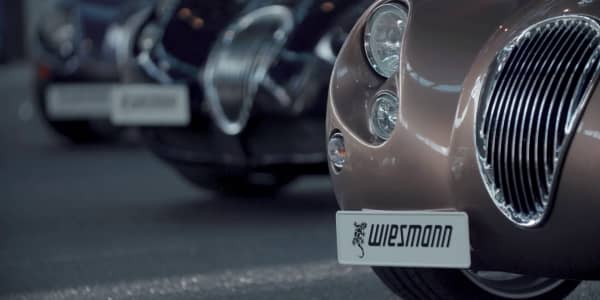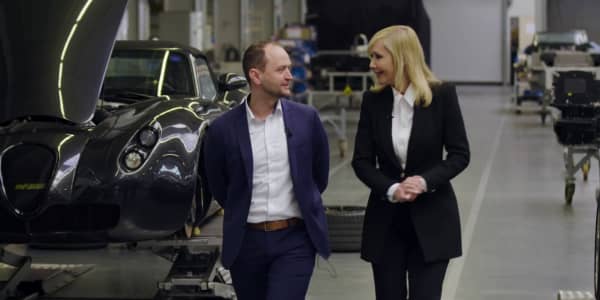Mobile World Congress (MWC), one of the world's biggest technology showcases, came to an end on Thursday.
The event which took place in Barcelona, Spain, saw the launch of key flagship products for device makers including Samsung and Sony, and also the return of Nokia-branded smartphones to the market.
CNBC runs through the biggest product launches at MWC.
Samsung Galaxy Tab S3
Samsung took the wraps off the Galaxy Tab S3, its flagship tablet that runs Android.
The device is focused around entertainment. It can play content in high dynamic range (HDR). This is video content filmed in way to make the contrasts sharper, giving a better depth to the picture.
But Samsung has also released a keyboard and stylus for the Tab S3 for those who want to use it for work.
Nokia 3310
The launch that perhaps created the most excitement was the unveiling of the .
Nokia no longer makes devices, but it has licensed its brand and technology to Finnish firm HMD Global who has partnered with Taiwanese giant Foxconn to manufacture phones.
The reimagined Nokia 3310 is a feature phone and has the classic game "Snake" installed.
BlackBerry KEYone
Another brand trying to make a comeback is BlackBerry. The Canadian technology firm has licensed its brand and technology to TCL Communications.
Under the partnership, the two firms , an Android device with a physical keyboard and touchscreen.
The keyboard is also touch-sensitive, allowing users to move their fingers across it to scroll around the screen.
Sony Xperia Touch
MWC was not only about smartphones. Sony used the event to announce that its would be commercially available soon.
The 1,499 euro ($1,587) gadget projects an image onto either a vertical or horizontal surface, turning it into a touchscreen.
Huawei P10
Huawei is continuing to aggressively challenge Apple and Samsung. To continue its push, the Chinese electronics giant unveiled the P10, an Android smartphone with a dual-lens camera aimed at social media savvy users.
It's a 5.1 inch device but Huawei also released a larger 5.5 inch P10 Plus.
LG G6
LG's last phone, the G5, didn't work out too well. So the company , its latest flagship smartphone which it hopes can help it challenge the top players.
It has a 5.7 inch screen, with the display taking up about 80 percent of the front of the phone. This has allowed LG to increase the screen size, but not significantly change the actual size of the device.
The G6 can play high dynamic range (HDR) content. HDR is an image which makes the whites brighter and black colors darker. Currently Amazon and Netflix have some shows filmed in HDR, which will be able to be played on the G6.
Samsung Gear VR with controllers
Samsung launched a new version of the GearVR virtual reality headset with controllers at MWC.
It is powered by the software made by Oculus, a company which Facebook owns. The controller is aimed at people playing games on the headset.
Nokia 6, 5 and 3
HMD Global released as well as the revamped 3310.
The Nokia 6 is a device with a 5.5 inch screen and it's the top of HMD's range. It costs 229 euros ($242). The Nokia 6 is the phone pictured.
The Nokia 5 and Nokia 3 are smaller and cheaper than the Nokia 6.
Sony Xperia XZ Premium
The Sony Xperia XZ Premium is the first to boast a 4K high dynamic range (HDR) screen, making the contrast much more extreme and creating better depth of images.
Sony also improved the camera and introduced the ability to film in super-slow motion. The Japanese firm focused on two of its key strengths : Display technology and imaging.
Samsung Galaxy Book
As well as the Galaxy Tab S3, Samsung also launched the Galaxy Book, a tablet that comes with a keyboard and stylus called the S Pen, and runs Windows.
This is aimed at replacing people's laptops with the target audience being those who want productivity on the go.
Moto G5
Motorola, which is now owned by China's Lenovo, launched the Moto G5, emphasizing battery life and camera quality as its main selling points.
The company claims you can go morning to night without needing to charge the phone and its technology means a phone can get enough charge to run for several hours after being plugged in for just a few minutes.
Huawei Watch 2
Huawei is not giving up on the wearables market and launched the Huawei Watch 2 to prove it.
The smartwatch runs Google's Android Wear 2, an operating system made for wearables and users can make calls and receive texts without the need for the device to be connected to a smartphone. That's because it has a built-in SIM card.
It comes in two versions: The Huawei Watch 2 and Huawei Watch 2 Classic.
Sony Xperia Ear
Last year, Sony unveiled the Xperia Ear concept. It was an earbud equipped with a voice assistant and was tethered to a phone allowing users to take calls and respond to messages.
At MWC 2017, Sony showed off a change in design to the concept product, which is still not being commercialized.





